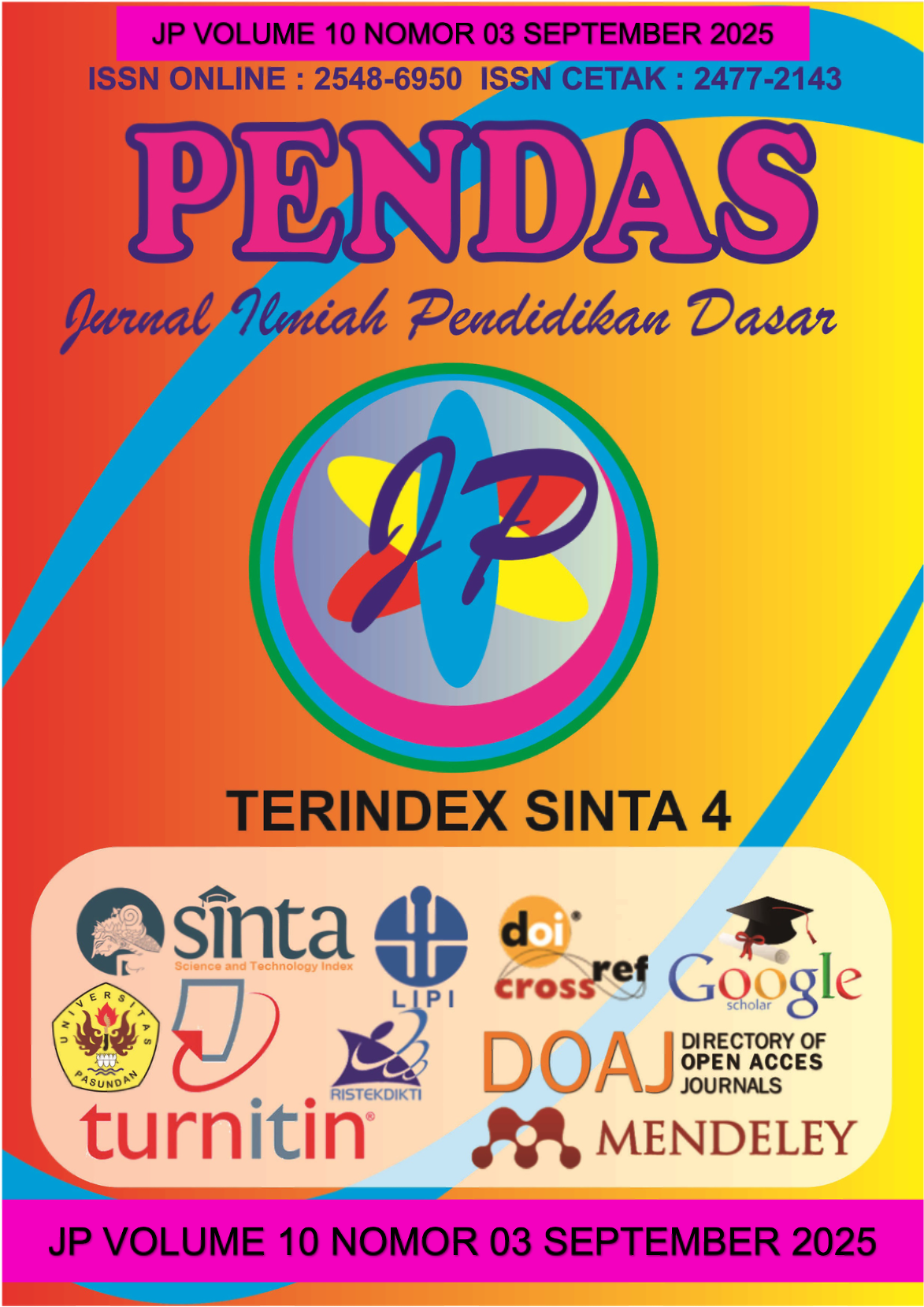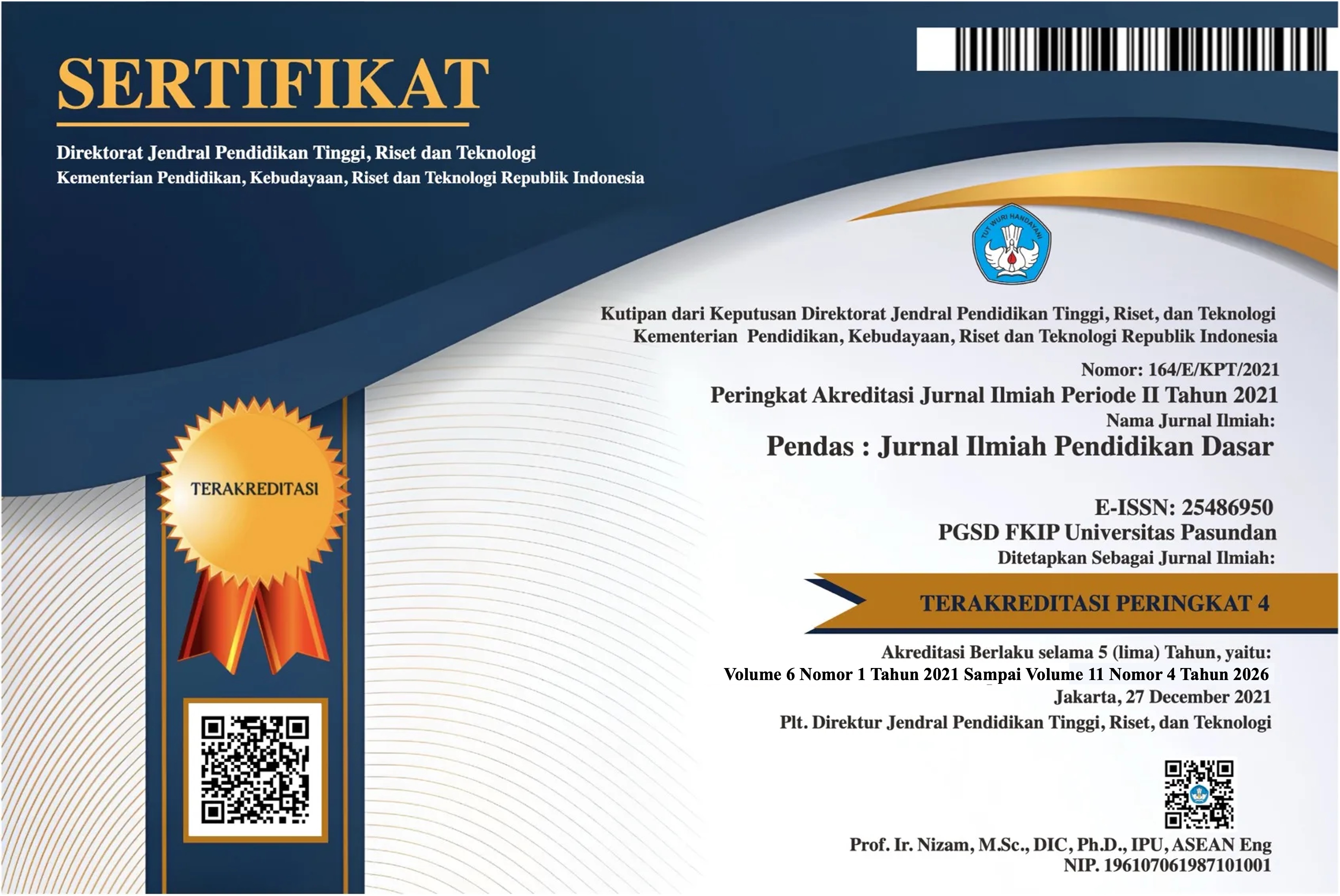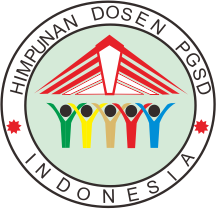ANALISIS MATERI BUKU “33 HARI MAHIR BAHASA ARAB” KARYA USTADZ H. SYAIFUL ALIM, LC., M.PD.
DOI:
https://doi.org/10.23969/jp.v10i03.32949Keywords:
Keywords: Content analysis, textbook, Arabic language, Mackey’s principles, language learningAbstract
This study aims to analyze the content quality of the book 33 Hari Mahir Bahasa Arab written by Ustadz H. Syaiful Alim, Lc., M.Pd., and to evaluate its compliance with W.F. Mackey’s principles of language teaching materials development, namely selection, gradation, presentation, and repetition. This research employed a qualitative approach with a library research design, supported by content analysis and interviews as data collection techniques. The findings reveal that the book generally meets the criteria of a good textbook in terms of content, language, presentation, and graphics. Its strengths lie in the selection of functional materials, the progressive gradation of topics, the simple and communicative presentation, and the consistent application of repetition. However, some weaknesses were also identified, such as limited variation in presentation methods, lack of visual and digital media integration, and insufficient context-based practice tasks. Thus, it can be concluded that the book is suitable as a teaching material for beginner learners, although further development is needed to meet the demands of modern language learning.
Keywords: Content analysis, textbook, Arabic language, Mackey’s principles, language learning
Downloads
References
Acar, A. (2024). Action-oriented approach in language education: CEFR-based perspectives. Journal of Language Teaching and Research, 15(1), 22–34.
BSNP. (2014). Instrumen Penilaian Buku Teks Pelajaran. Jakarta: Badan Standar Nasional Pendidikan.
Council of Europe. (2020). Common European Framework of Reference for Languages: Learning, teaching, assessment – Companion volume. Strasbourg: Council of Europe Publishing.
Ellis, R. (2017). Task-based language teaching: Concepts, classroom practice, and teacher education. Cambridge: Cambridge University Press.
Godwin-Jones, R. (2023). Emerging technologies: Expanding horizons in vocabulary learning with spaced repetition. Language Learning & Technology, 27(2), 1–12.
Khatibah. (2011). Penelitian kepustakaan. Jurnal Iqra’, 5(1), 36–39.
Kida, S. (2024). Effects of word repetition on vocabulary retention in EFL contexts. System, 120, 103654. https://doi.org/10.1016/j.system.2024.103654
Krashen, S. D. (1982). Principles and practice in second language acquisition. Oxford: Pergamon Press.
Learning, C. (2025). Universal Design for Learning in practice: Inclusive education for diverse learners. New York: Routledge.
Littlewood, W. (2014). Communicative language teaching: An introduction. Cambridge: Cambridge University Press.
Mackey, W. F. (1975). Language teaching analysis. London: Longman.
Mayer, R. E. (2021). Multimedia learning (3rd ed.). Cambridge: Cambridge University Press.
Muslich, M. (2010). Textbook writing: Dasar-dasar pemahaman, penulisan, dan pemakaian buku teks. Jakarta: Ar-Ruzz Media.
Nation, I. S. P. (2013). Learning vocabulary in another language (2nd ed.). Cambridge: Cambridge University Press.
Paivio, A. (1990). Mental representations: A dual coding approach. Oxford: Oxford University Press.
Richards, J. C. (2006). Communicative language teaching today. Cambridge: Cambridge University Press.
Skinner, B. F. (1957). Verbal behavior. New York: Appleton-Century-Crofts.
Sugiyono. (2016). Metode penelitian kualitatif, kuantitatif, dan R&D. Bandung: Alfabeta.
Susanto, D. (2023). Triangulasi teori dalam penelitian kualitatif: Konsep dan penerapan. Jurnal Ilmiah Metodologi Penelitian, 12(2), 88–97.
Vygotsky, L. S. (1978). Mind in society: The development of higher psychological processes. Cambridge, MA: Harvard University Press.
Zed, M. (2014). Metode penelitian kepustakaan. Jakarta: Yayasan Obor Indonesia.
Zulli Umri Siregar. (2023). Analisis isi sebagai metode penelitian komunikasi. Jurnal Penelitian Komunikasi, 26(1), 45–59.
Downloads
Published
Issue
Section
License
Copyright (c) 2025 Pendas : Jurnal Ilmiah Pendidikan Dasar

This work is licensed under a Creative Commons Attribution 4.0 International License.



















